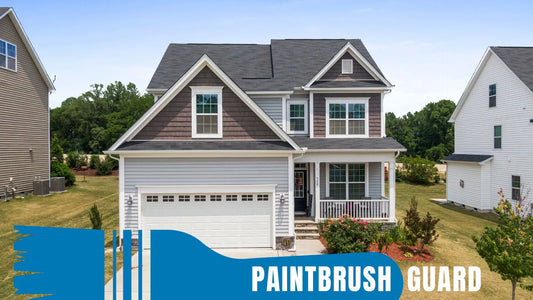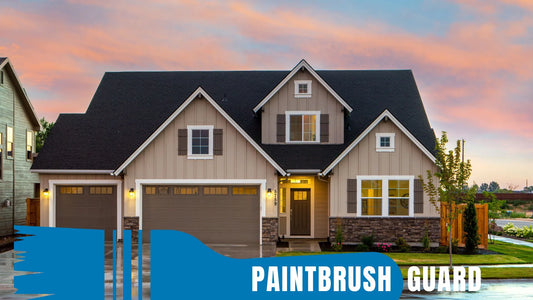Painting directly on exterior brick is possible but risky without preparation. Uncleaned or damaged brick can cause peeling or moisture issues. For a durable finish, clean, repair, and prime the surface first. Proper steps ensure painting brick delivers lasting, attractive results without costly problems.
Why Painting Directly on Exterior Brick Is Risky
Applying paint straight onto exterior brick without preparation often leads to poor adhesion, peeling, or damage. Brick’s porous nature and exposure to weather require specific steps to ensure paint performs well. Here’s why skipping preparation can cause issues when painting brick exteriors.
Risks of Painting Without Preparation
- Poor Adhesion: Dirt, mildew, or efflorescence on brick prevents paint from sticking, leading to peeling or flaking.
- Moisture Trapping: Brick needs breathable paint and proper sealing. Painting directly can trap moisture, causing mold or brick deterioration.
- Uneven Finish: Unrepaired cracks or uneven surfaces result in a patchy, unprofessional appearance.
- Reduced Durability: Without primer or cleaning, paint fades or chips faster, requiring frequent touch-ups.
These risks highlight the importance of preparing brick before painting.
Can You Paint Brick Without Preparation?
Technically, you can apply paint straight onto exterior brick, but it’s not recommended. Even if the brick appears clean, hidden contaminants or moisture can compromise the finish. In rare cases, new, undamaged brick in dry climates might accept paint with minimal prep, but priming is still advised for adhesion. For most projects, preparation is essential to avoid costly repairs.
Key Considerations for Painting Exterior Brick
|
|
|
|
|
|
|
|
|
|
|
|
|
|
|
This table outlines why preparation is critical for painting brick.
Key Steps to Prepare Exterior Brick for Painting
To ensure a successful paint job, follow these preparation steps before applying paint to exterior brick:
1. Clean the Surface
Pressure wash brick to remove dirt, mildew, and efflorescence (white, powdery deposits). Use a low-pressure setting to avoid damage. Let the brick dry completely, which may take 24–48 hours, to ensure no moisture is trapped.
2. Repair Damage
Inspect brick for cracks, loose mortar, or damaged areas. Fill cracks with masonry sealant or caulk and repoint mortar if needed. Replace severely damaged bricks to create a smooth surface for painting.
3. Apply Primer
Use a masonry-specific primer to improve paint adhesion and coverage. Primer seals the porous brick, preventing uneven absorption and ensuring a uniform finish. Apply one coat and let it dry fully.
4. Choose the Right Paint
Select breathable, exterior-grade masonry or elastomeric paint designed for brick. These paints allow moisture to escape, reducing the risk of mold or damage. Avoid standard latex paints, which trap moisture.
5. Consider Climate
Local weather affects paint performance. In humid or rainy areas, prioritize breathable paints and thorough sealing. In dry, sunny climates, choose UV-resistant paints to prevent fading.
6. Check Regulations
If you’re in a homeowners’ association, verify painting is allowed. Research local trends to select colors that enhance curb appeal and marketability.
These steps ensure painting brick is effective and long-lasting.
Steps for Painting Exterior Brick
Once the brick is prepared, follow these steps for a professional-quality finish:
- Clean Thoroughly: Pressure wash brick and let it dry for 24–48 hours.
- Repair Surface: Fill cracks and repoint mortar, replacing damaged bricks as needed.
- Prime the Brick: Apply a masonry-specific primer and allow it to dry completely.
- Apply Paint: Use breathable masonry or elastomeric paint, applying two coats with a roller for large areas and a brush for details.
- Seal the Finish: Apply a clear masonry sealer for added protection against moisture and UV damage.
These steps prevent the issues associated with painting directly on brick.
Alternatives to Painting Exterior Brick
If you’re hesitant about painting brick, consider these alternatives for a refreshed look without the permanence of paint:
- Whitewashing: Apply a diluted paint mixture for a soft, natural look that’s less permanent and allows brick texture to show.
- Limewashing: Use a lime-based solution that bonds with brick, offering breathability and easier removal than paint.
- Staining: Brick stains penetrate the surface, changing color while preserving texture and breathability.
- Cleaning and Restoring: Pressure washing or sandblasting can restore brick’s original appearance without paint.
These options may suit you if painting directly feels too risky.
Does Painting Exterior Brick Affect Home Value?
Painting brick can impact home value, depending on your local market. Well-executed paint jobs with neutral colors like white or gray often boost curb appeal and attract buyers. However, skipping preparation may lead to peeling or damage, deterring buyers. In markets valuing natural brick, painting might reduce appeal.
Conclusion: Is Painting Directly on Exterior Brick Advisable?
Painting straight onto exterior brick is possible but not advisable due to risks like peeling, moisture damage, and reduced durability. This article has outlined why preparation—cleaning, repairing, and priming—is essential for a lasting finish. By following these steps or exploring alternatives, you can achieve a beautiful, durable result for your brick exterior.
















